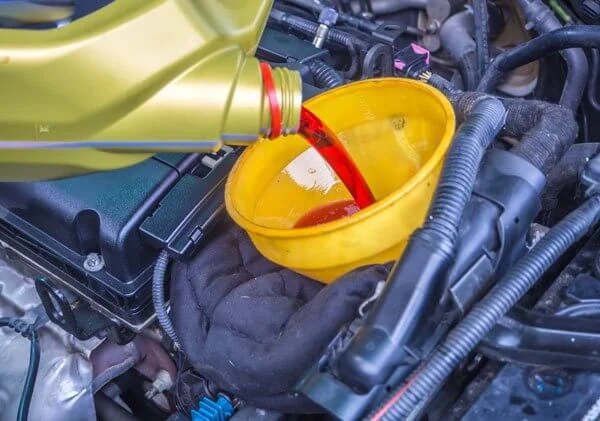
The transmission system is responsible for delivering the power from your engine down to your wheels. And for the smooth operation of transmission, requires transmission fluid which acts as a lubricant and coolant, ensuring that the gears and components work seamlessly.
When the transmission fluid level drops too low, it can lead to serious issues.
In this article, we’ll explore the signs of low transmission fluid, its causes, how long transmission fluid should last, and what you can do for repair.
Signs of Low Transmission Fluid
- Slipping Gears: You might notice that your car struggles to shift gears smoothly. It may feel like it’s slipping, which could be due to insufficient fluid to create proper hydraulic pressure.
- Delayed or Rough Shifting: If you experience a delay or roughness when your vehicle shifts gears, it could be a sign of low transmission fluid affecting the gear engagement process.
- Unusual Noises: Low transmission fluid can cause your transmission to make strange noises like whining, clunking, or buzzing. These noises often occur during gear changes.
- Overheating: Transmission fluid also helps in cooling the transmission system. When levels are low, the transmission can overheat and may damage the gearbox and other connected components.
- Warning Light: Modern vehicles are equipped with warning lights on the dashboard. If you see a transmission or fluid-related warning light illuminated, it’s time to check your fluid levels.
Causes of Low Transmission Fluid:
- Transmission Fluid Leak: The most common cause of low transmission fluid is a leak. Leaks can occur from worn seals, gaskets, or even a damaged transmission pan.
- Evaporation: Over time, some transmission fluid can naturally evaporate. However, a sudden drop in fluid level indicates a problem.
- Incorrect Fluid Levels: During maintenance or repairs, if the transmission fluid is not refilled to the appropriate level, it can lead to low fluid issues.
Potential Engine Components at Risk
When your vehicle’s transmission fluid is running low, it can impact several critical engine components, including:
- Gears and Clutches: Insufficient fluid levels can lead to increased friction and wear on gears and clutches, resulting in poor shifting performance and potential damage.
- Torque Converter: Low transmission fluid can cause the torque converter, a key component in automatic transmissions, to overheat and suffer premature wear.
- Transmission Bands: These bands are essential for holding gears in place. Low fluid levels can cause them to slip, leading to improper gear engagement and potential transmission damage.
- Valve Body: The valve body controls the flow of transmission fluid and directs hydraulic pressure. Inadequate fluid can cause valves to stick or function improperly.
- Solenoids: Solenoids play a crucial role in gear shifting by controlling the flow of transmission fluid. Low fluid levels can hinder their operation, leading to rough shifts or gear slippage.
- Transmission Pump: The transmission pump relies on fluid for lubrication and cooling. Without proper lubrication, the pump can experience increased wear and reduced efficiency.
- Seals and Gaskets: Insufficient fluid can lead to overheating and cause seals and gaskets to degrade, potentially resulting in leaks and further fluid loss.
How Long Should Transmission Fluid Last?
The lifespan of transmission fluid varies depending on factors like driving conditions, vehicle make, and fluid type. Generally, automatic transmission fluid should be changed every 30,000 to 60,000 miles. However, it’s essential to consult your vehicle’s manual for manufacturer-recommended intervals.
Repairing Transmission Fluid
- Check Fluid Levels: Start by locating the transmission dipstick (usually labeled) and checking the fluid level. If it’s below the recommended level, it’s time to add more fluid.
- Identify Leaks: If you suspect a leak, inspect the transmission and surrounding areas for signs of fluid accumulation. Address any leaks promptly and replace seals or gaskets as needed.
- Fluid Replacement: In cases of severely low fluid levels or contaminated fluid, it’s advisable to have the transmission fluid replaced professionally.
- Consult a Mechanic: If you’re unsure about handling low transmission fluid issues yourself, it’s best to consult a mechanic. They can diagnose the problem accurately and perform the necessary repairs.
Ready to Ensure a Healthy Transmission?
Low transmission fluid can lead to significant transmission problems if not addressed promptly.
So, you are advised to never ignore any signs of low transmission fluid or suspect an issue with your car’s transmission.
Don’t hesitate to reach out to us and get the expert assistance you need to help you diagnose and address any transmission-related problems.
Don’t let low transmission fluid compromise your vehicle’s performance.
Contact us now. Your vehicle deserves the best care!
